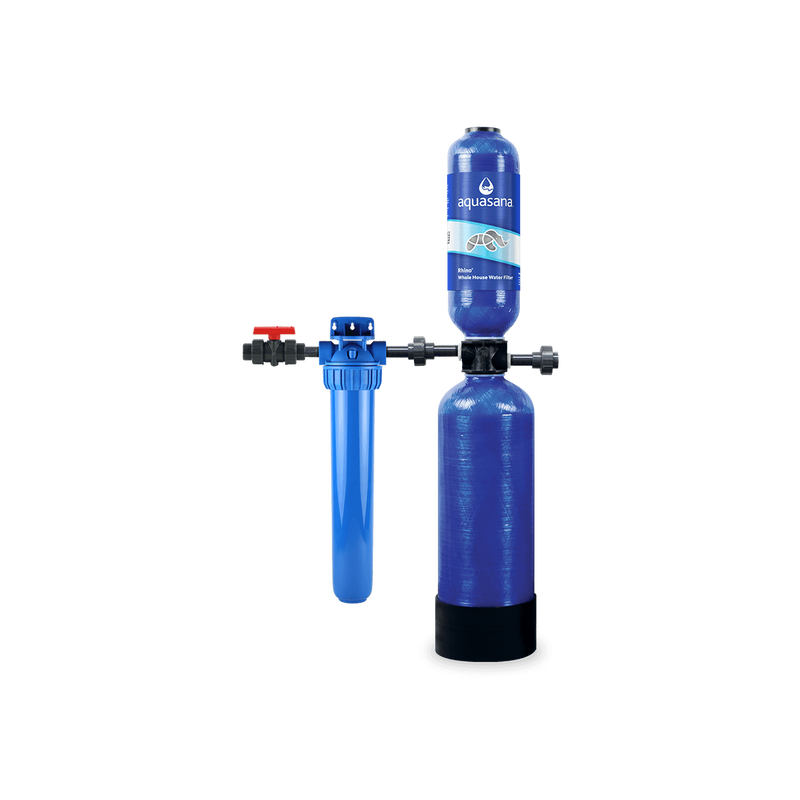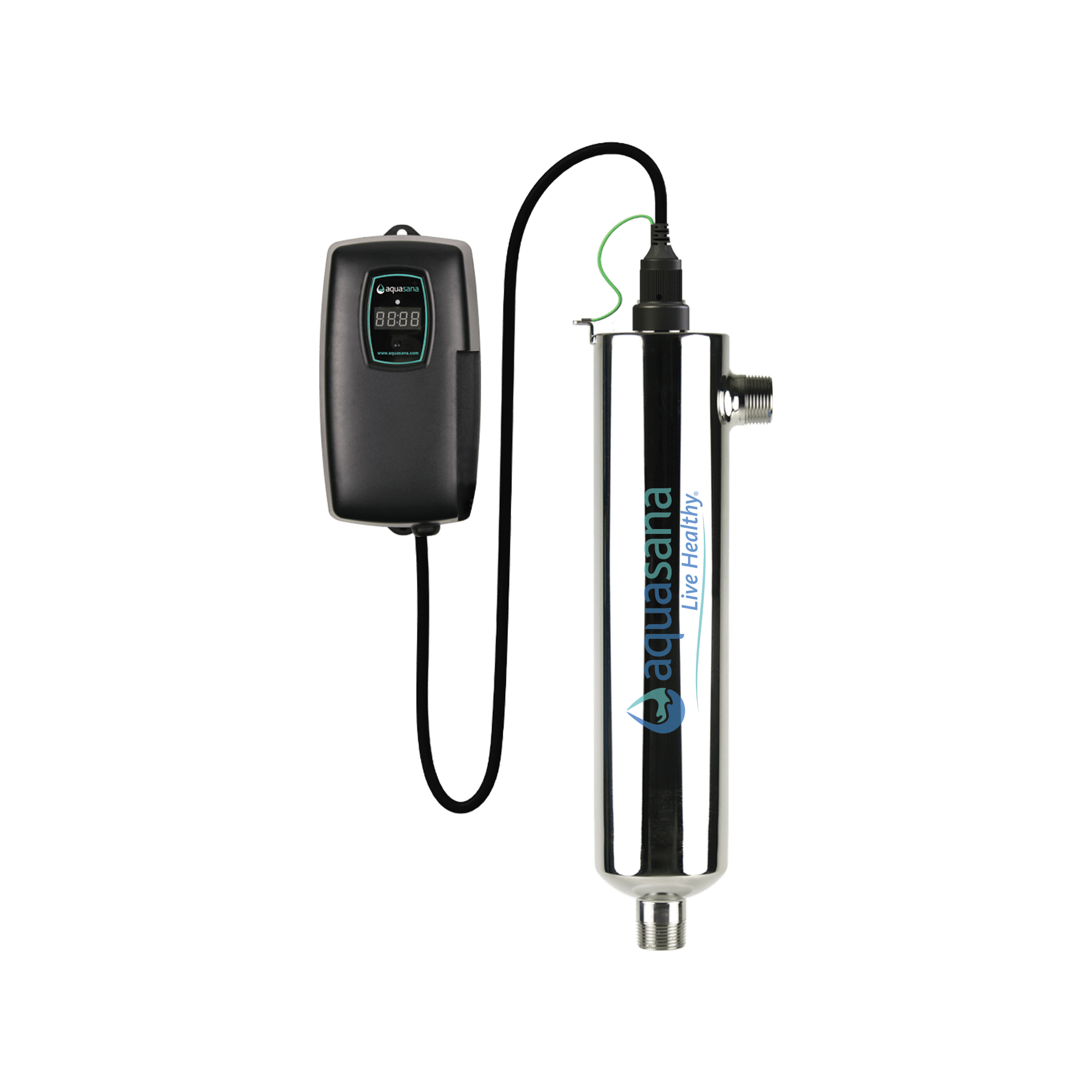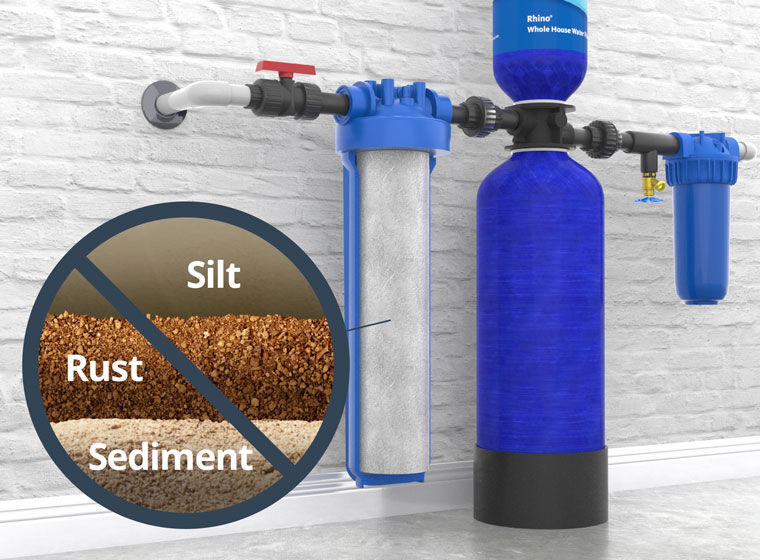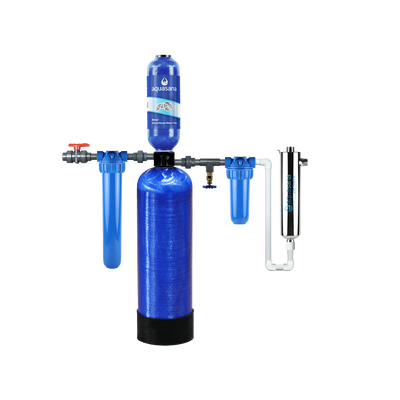While your post-filter is the smallest part of the process, it’s mighty. Post-filters use robust, layered mesh screens to further improve water quality. It essentially acts as a polishing agent, catching any remaining sediment and organic particles that might still be in your water. Just be sure to replace your post-filter every six months — that will keep your system unclogged so you don’t experience pressure drop.
WHOLE HOUSE WATER FILTERS
Rhino®
High-performance water filtration system reduces chlorine and more from every tap for 1,000,000 gallons or 10 years.

Extra filtration options for whole house systems
Additionally, you can pair your whole house system with an ultraviolet (UV) light. This upgrade sterilizes bacteria, viruses, and cysts to safeguard drinking water. These types of filters are recommended for homes using well water.
Furthermore, if your home has hard water, we suggest using a water softener or a salt-free water conditioner. Water softeners tackle hardness-causing minerals, such as calcium and magnesium, to deliver soft, scale-free, and spotless water throughout your home. Conditioners, also known as water descalers, are systems that deter minerals from binding to form scale that can damage pipes and appliances and cause spotting on dishes and bathtubs. Our salt-free water conditioner is best suited for water hardness below 15 grains per gallons, while our water softeners can handle harder water.
See how whole house filters work firsthand
The best thing you can do for your family is to protect them from contaminants before they enter your home, so you can drink, cook, and bathe with peace of mind. A whole house filter can do just that, and you can customize your whole house system to match your specific needs. Visit our online store today to find the perfect filter for you and your family!




